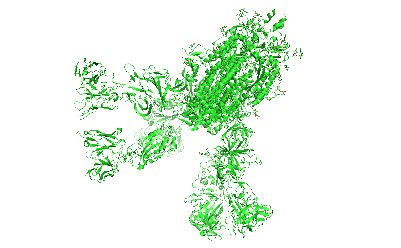Glucoconjugados

Los glucoconjugados consisten en carbohidratos, o glucanos, ligados a una proteína, un lípido, un péptido y otros compuestos. Los glucoconjugados se forman por glucosilación y participan en diversos procesos biológicos en los organismos. La investigación glucobiológica estudia la estructura y actividad de los carbohidratos y los glucoconjugados en relación con la salud humana. Comprender cómo los trastornos en estos procesos inducen enfermedades graves también es relevante para la biología molecular y celular, la proteómica y la medicina.
Ofrecemos una completa cartera de glucoconjugados, como los glucolípidos, las glucoproteínas y los lipopolisacáridos, para todos sus requisitos experimentales, entre ellos, la extracción, la caracterización, la formulación y las modificaciones químicas o enzimáticas que impliquen medios o modos de activación no convencionales. Descubrir dianas farmacéuticas para enfermedades infecciosas, inflamación y cáncer; desarrollar nuevas posibles vacunas contra el cáncer, las infecciones víricas y bacterianas, y otras enfermedades; y explorar otros usos potenciales de los glucoconjugados como opciones terapéuticas.
Products
Recursos relacionados
- Article: BIOshell Glycan HPLC Columns
Fast, high-resolution separations of procainamide labeled glycans - dextran ladder, human IgG and cetuximab
- Article: Deglycosylation Kits
Find deglycosylation kits for your research. Review the different features of deglycosylation kits for glycoproteins, enzymatic proteins, and native proteins.
- Article: Enzymatic Deglycosylation
Enzymatic Deglycosylation Strategies: Sequential hydrolysis of individual monosaccharides from glycans can be useful for the elucidation of the structure and function of the glycan component.
- Article: Glycoprotein Deglycosylation
Information about Glycoprotein deglycosylation. The diversity of oligosaccharide structures, both O-linked and N-linked, often results in heterogeneity in the mass and charge of glycoproteins.
- Article: Glycosaminoglycans and Proteoglycans
Uncover more about glycosaminoglycans and proteoglycans including the structure of glycosaminoglycans (GAGs), the different types of GAGs, and their functions.
- Article: Glycosphingolipids
Glycosphingolipids
- Article: GPI Anchored Glycoproteins
GPI Anchored Glycoproteins
- Article: Lipopolysacharides
Lipopolysaccharide (LPS) is a major component of Gram-negative bacteria, important for microbiological research.
- Article: Peptidoglycans
Peptidoglycan structure: alternating GlcNAc and N-acetylmuramic acid cross-linked to peptides form the basic backbone.
- Article: Purification and Removal of Glycoproteins and Polysaccharides
- Article: Strategies for Deglycosylating N-linked Glycans
Explore strategies for releasing N-linked glycans with PNGase F, PNGase A & native & sequential deglycosylation with endoglycosidases & exoglycosidases.
- Brochure: Glycobiology
Glycobiology and glycoproteomics are crucial in life science, with diverse glycoproteins and important roles in cellular communication and physiology.
- Brochure: Glycoconjugates from GlycoNZ
Glycobiology is vital in understanding carbohydrates' role in human health. We offer a wide range of products, including glycoconjugates, and have expanded our portfolio through a partnership with GlycoNZ, offering more opportunities for exploring drug targets for various diseases.
- Selection Guide: Deglycosylation
Complete kits for highly specific deglycosylation.
- Selection Guide: Glycoproteomics Selection Guide — Deglycosylation
Glycoproteomics Selection Guide — Deglycosylation and Glycoproteomics Selection Guide — Labeling and Detection, Quantitation
Para seguir leyendo, inicie sesión o cree una cuenta.
¿No tiene una cuenta?